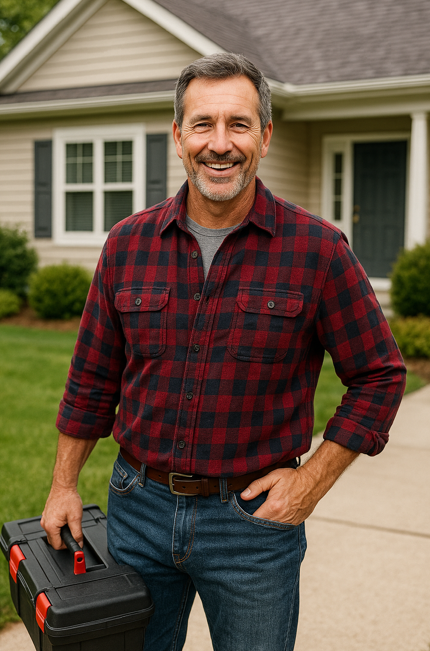If you’re replacing just your AC or furnace and not both, stop right there. Swapping out one side of your HVAC system without thinking about the other can cost you more than you think. I’m Mike Sanders, and today I’m walking you through why it’s so important to make sure your furnace and AC are properly matched—and how to do it right.
What Does “Matching” Even Mean?
In HVAC speak, a “matched system” means your air conditioner, furnace, and indoor coil are all designed to work together. They’ve been tested and certified as a team—usually by AHRI, the Air-Conditioning, Heating, and Refrigeration Institute.
A matched system ensures:
-
Proper airflow
-
Maximum energy efficiency
-
Fewer breakdowns
-
Correct SEER2 and AFUE ratings
-
Eligibility for rebates and warranties
🔗 AHRI Directory: Certified System Matchups
Why Matching Your Furnace and AC Matters
Let’s break it down by what happens when you don’t match components.
1. Reduced Efficiency
That new 15.2 SEER2 R-32 condenser you just bought? It won’t hit that number unless the furnace blower and indoor coil are also rated for it.
2. Comfort Problems
Your home may end up too humid in the summer or with hot/cold spots because the airflow isn’t right.
3. More Repairs
Mismatched systems wear out faster. Compressors overwork, blower motors strain, and parts break before their time.
4. No Rebates
Many rebate programs require AHRI-certified system pairings. Mismatching voids eligibility.
5. Voided Warranties
Manufacturers may refuse to honor warranties if your system wasn’t installed as a matched unit.
How to Match Furnace and AC Units Properly
Here’s how to do it the right way from the start:
✅ Step 1: Start With a Load Calculation
You need to know the heating and cooling demand of your home. A Manual J load calculation is the gold standard and will help size both the furnace (in BTUs) and the AC (in tons).
🔗 Energy Vanguard: What’s a Manual J Load Calculation?
✅ Step 2: Choose a Blower That Matches the Coil
The blower motor inside your furnace (or air handler) must move the right amount of air to match your AC coil. Typically:
-
400 CFM (cubic feet per minute) per ton of cooling
-
Variable-speed or ECM blowers are ideal for higher-SEER2 units
Example: If you have a 3-ton R-32 condenser, the furnace blower should handle 1,200 CFM.
✅ Step 3: Use AHRI to Verify the Match
Once you pick your condenser, furnace, and indoor coil, check the AHRI Match Number. This tells you the system has been certified to work together, with confirmed SEER2 and AFUE performance.
AHRI certification also proves:
-
Your system qualifies for ENERGY STAR®
-
You’re eligible for federal and local rebates
-
The manufacturer will stand behind the warranty
What About Upgrading One Component at a Time?
In some cases, you can upgrade your AC or furnace separately—but only if the existing component is still compatible with new models. Here's what to keep in mind:
-
Older furnaces may not support variable-speed or ECM blower demands
-
New R-32 condensers require matching indoor coils and metering devices
-
SEER2 ratings only apply to matched systems
💡 Mike’s Tip: If your system is 10+ years old, you're better off replacing both units together. You’ll save on labor and guarantee a good match.
The Benefits of a Matched R-32 AC and Gas Furnace System
At The Furnace Outlet, we make it easy by offering matched R-32 systems with:
-
14.5 to 15.2 SEER2-rated condensers
-
Indoor coils pre-matched to R-32 refrigerant
-
High-efficiency 96% AFUE gas furnaces
-
Verified AHRI certifications
Explore options here:
🔗 R-32 AC and Gas Furnace Systems
Final Thoughts from Mike
Matching your AC and furnace isn’t just good practice—it’s critical if you want to avoid long-term headaches. You’ll get better comfort, lower energy bills, and peace of mind knowing your system is built to work together.
If you're not sure where to start, that’s what I’m here for. Whether you're replacing your full system or just upgrading one side, make sure it’s done right the first time. Trust me—your future self (and your energy bill) will thank you.







